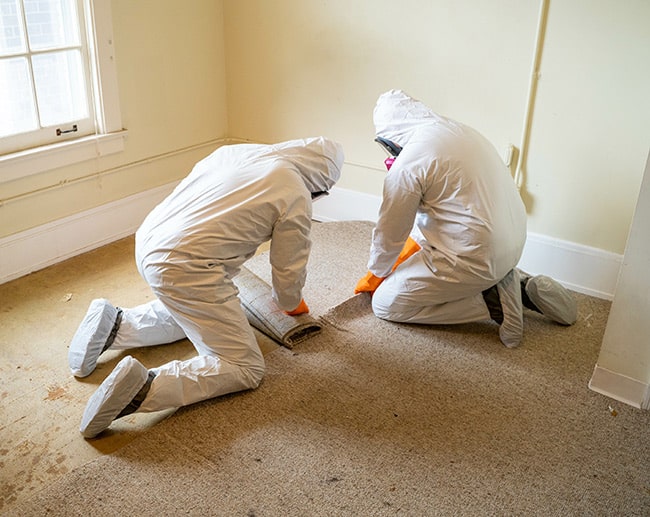Expert Biohazard Cleaning and Decontamination for Blood, Bodily Fluids, and Hazardous Products
The potential health dangers associated with direct exposure to biohazards underscore the important need for thorough handling and comprehensive cleaning. As we navigate the detailed landscape of biohazard clean-up, understanding the nuances of guidelines, compliance, and the specialized tools at play becomes vital in making sure a secure and comprehensive purification procedure.
Wellness Risks of Biohazard Direct Exposure
Direct exposure to biohazards positions considerable health risks that can result in extreme repercussions for people and neighborhoods alike. Biohazards encompass a vast array of organic materials, consisting of blood, physical fluids, mold and mildew, bacteria, infections, and various other potentially contagious materials. When individuals enter call with these biohazards, whether through mishaps, improper handling, or ecological exposure, they face the danger of having serious ailments or conditions.
One of the key wellness threats related to biohazard exposure is the transmission of infectious illness. Bloodborne virus such as HIV, hepatitis B and C, and different germs can be existing in biohazardous materials, positioning a straight threat to human health and wellness. Inhaling air-borne biohazards like mold and mildew spores or entering call with polluted surface areas can additionally lead to breathing concerns, allergies, and other damaging wellness impacts.
In addition, biohazard direct exposure can have long-term health and wellness ramifications, with some conditions showing up years after the initial call (Blood Cleanup). For that reason, it is critical to prioritize appropriate biohazard cleaning and decontamination to alleviate these health threats and ensure the safety of communities and individuals

Specialized Training for Biohazard Clean-up
When it pertains to handling biohazard cleanup effectively and safely, specialized training plays an essential function in guaranteeing appropriate purification procedures are adhered to. Biohazard cleaning requires particular expertise and abilities to effectively mitigate threats connected with bloodborne microorganisms, physical fluids, and hazardous products. Professionals educated in biohazard cleaning undergo strenuous instruction on exactly how to safely take care of, remove, and take care of biohazardous products to stop contamination and direct exposure.
Specialized training for biohazard cleaning covers a series of vital topics, consisting of appropriate individual safety devices (PPE) use, bloodborne virus understanding, decontamination methods, and contaminated materials disposal methods. People educated in biohazard cleaning are furnished with the needed competence to analyze contamination degrees, determine possible hazards, and implement proper cleaning procedures in compliance with governing requirements.
Constant training and education are vital in the area of biohazard cleaning to remain updated on the latest purification modern technologies, safety procedures, and guidelines. By investing in specialized training, biohazard clean-up experts can effectively reply to emergency cleanup situations and guard both public health and the setting.
Value of Proper Purification Techniques
Utilizing appropriate purification strategies is crucial in biohazard clean-up to successfully eliminate dangerous products and reduce health and wellness threats. Efficient purification not just guarantees the elimination of visible informative post traces of blood, physical fluids, and various other biohazards but additionally targets undetectable microorganisms that might position severe wellness threats otherwise properly eradicated. By adhering to rigorous purification protocols, educated professionals can considerably minimize the threat of direct exposure to hazardous bacteria, infections, and microorganisms that could cause infections or conditions.
Proper purification strategies involve making use of specialized devices and disinfectants that are particularly made to neutralize biohazards effectively. Detailed cleaning and sanitation of infected areas are necessary to protect against the spread of virus and ensure a risk-free environment for occupants. In addition, the right disposal of biohazardous waste following purification procedures is important in protecting against contamination of other surface areas or individuals.

Equipment and Tools for Safe Cleaning
When dealing with blood, physical liquids, or harmful materials, biohazard cleansing professionals depend on specialized equipment to minimize exposure threats and extensively sanitize the damaged area. In addition, biohazard cleansing sets containing disinfectants, absorbent materials, and biohazard bags are made use of to safely contain and dispose of contaminated items.
Advanced cleaning devices like hospital-grade anti-bacterials, HEPA-filtered vacuums, and misting equipments are utilized to disinfect surface areas and get rid of biohazards efficiently. Specialized devices such as sharps containers and biohazard waste disposal containers are made click here to read use of to safely manage sharp items and biohazardous waste materials. By using the right devices and tools, biohazard cleansing professionals can ensure a comprehensive cleanup process that prioritizes security and lessens wellness dangers for both employees and residents of the affected space.
Regulations and Compliance in Biohazard Cleansing
Proper adherence to laws and conformity criteria is critical in biohazard cleansing to make certain the safety and security of both workers and the atmosphere. Government agencies such as OSHA (Occupational Safety And Security and Wellness Management) and the EPA (Epa) have developed specific standards for biohazard cleaning treatments to lessen health risks and environmental contamination. These laws cover a range of elements consisting of the handling, transport, and disposal of biohazardous materials, as well as the essential training and protective devices required for employees associated with the clean-up procedure.
Biohazard cleansing firms should stay updated with these policies to assure that their operations satisfy the required safety criteria. Failing to abide by these laws can lead to extreme consequences, including fines, lawsuit, and jeopardizing the health and wellness of individuals and the setting. By following rigorous policies and compliance steps, biohazard cleansing companies can effectively minimize threats and make certain a complete and secure clean-up procedure for all events entailed.
Verdict
In final thought, biohazard cleansing and purification call for customized training, correct techniques, and adherence check these guys out to laws. Exposure to blood, bodily fluids, and harmful products poses considerable health risks, making it vital to make use of the right devices and tools for safe cleanup. By following stringent procedures and standards, specialists can properly reduce the risks related to biohazard exposure and make certain the security of both themselves and others.
As we browse the detailed landscape of biohazard clean-up, understanding the nuances of policies, compliance, and the customized tools at play becomes vital in ensuring a detailed and secure decontamination process. (Blood Cleanup)
When it comes to dealing with biohazard cleanup effectively and securely, specialized training plays a basic role in ensuring proper purification procedures are adhered to.Using proper decontamination techniques is crucial in biohazard clean-up to properly reduce and remove unsafe products health risks. Additionally, biohazard cleaning packages containing anti-bacterials, absorbent products, and biohazard bags are used to securely consist of and dispose of contaminated things.
Federal government agencies such as OSHA (Occupational Security and Health And Wellness Administration) and the EPA (Environmental Defense Company) have actually developed particular standards for biohazard cleanup treatments to minimize health and wellness risks and environmental contamination.
 Tia Carrere Then & Now!
Tia Carrere Then & Now! Alisan Porter Then & Now!
Alisan Porter Then & Now! Danny Pintauro Then & Now!
Danny Pintauro Then & Now! Lacey Chabert Then & Now!
Lacey Chabert Then & Now! Teri Hatcher Then & Now!
Teri Hatcher Then & Now!